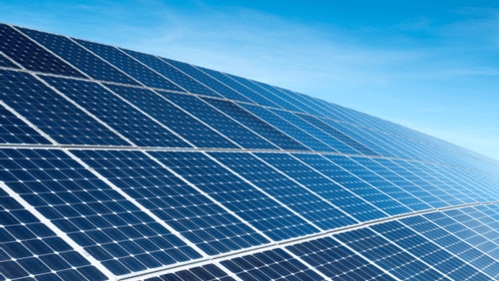Salesforce has built an incredible culture committed to responsible business practices and environmental sustainability. We deliver a carbon-neutral cloud to all our customers, we actively pursue green building certification for our global office spaces, and are committed to reaching 100 percent renewable energy by 2022. These milestones and commitments are just the tip of the iceberg when it comes to our company’s Net Zero strategy and more importantly to improving the state of the world.
Now, as addressing climate change becomes more urgent than ever, businesses, non-government organizations (NGOs), governments and other institutions need to work together across the globe to become powerful platforms for climate action.
At Salesforce, we recognize that notion and work towards it every day. Today Salesforce announced an all-new renewable energy deal in collaboration with some incredible partners and Salesforce customers — Bloomberg, Cox Enterprises, Gap Inc. and Workday, Inc. — and with guidance from LevelTen.
This group of companies, coming together as the Corporate Renewable Energy Aggregation Group, is one of the first examples of companies aggregating similar, relatively small amounts of renewable energy demand to enter into a virtual power purchase agreement (VPPA), collectively act as the anchor tenant for a large offsite renewable energy project.
What’s the problem the group is solving for?
Today only a handful of companies are actively purchasing renewable energy at scale. The main barrier facing most is a lack of good options. Often the purchasing options that work best for companies such as Salesforce are only available to companies looking to purchase large amounts of renewable energy. However the majority of companies have smaller renewable energy needs.
In 2017, on a mission to address this barrier, Salesforce worked with Business Council on Climate Change (BC3), and the Business Renewables Center (BRC) to gather a group of motivated companies to collaborate on potential solutions. Today, these five international businesses lay the groundwork for how other corporations can procure renewable energy cooperatively, maximize value, and reduce risk.
What does this mean for the industry?
This new structure allows the buyers to contract for relatively small pieces of the solar project, ultimately keeping transaction costs low and affords the buyers the opportunity to learn best practices from each other.
Importantly this new approach demonstrates that smaller buyers can pool their demand and support large scale projects in the same impactful way larger companies do. However this tactic could also help Salesforce and other larger companies in markets where their renewable energy needs are smaller, and enable those just starting their renewable energy journey to pilot VPPAs as a viable option to meet their climate goals.
This aggregation deal builds on Salesforce’s previous three VPPAs and puts the company on the right track to achieve our goal of reaching 100 percent renewable energy by 2022. And at the end of the day — a cleaner grid means a healthier planet for all.
To help other buyers replicate and build on what we’ve done, Salesforce and the Corporate Renewable Energy Aggregation Group are working on a plan to open source the process and findings.
Learn more about Salesforce’s clean energy strategy here and stay tuned for our aggregate VPPA playbook.




























